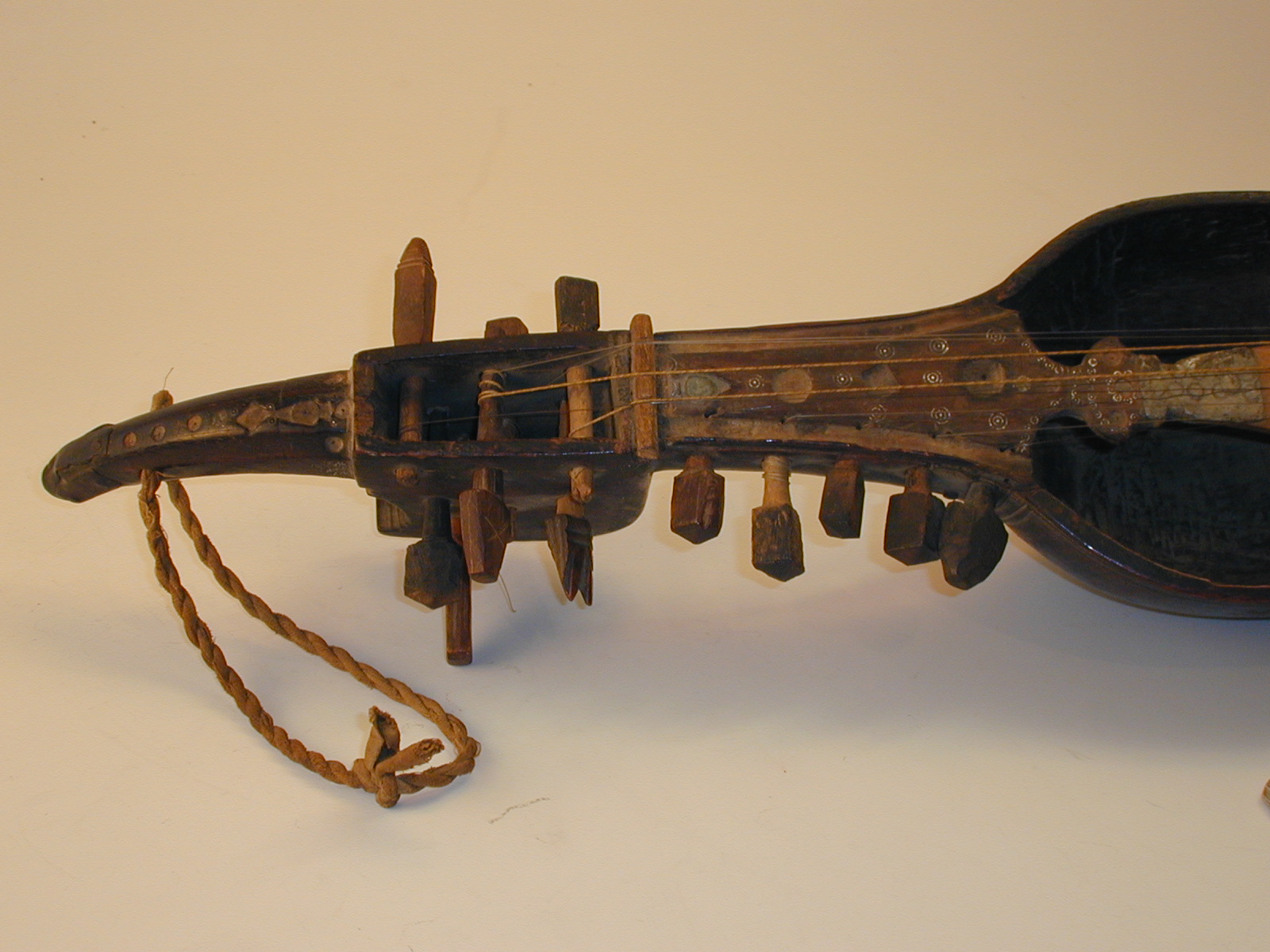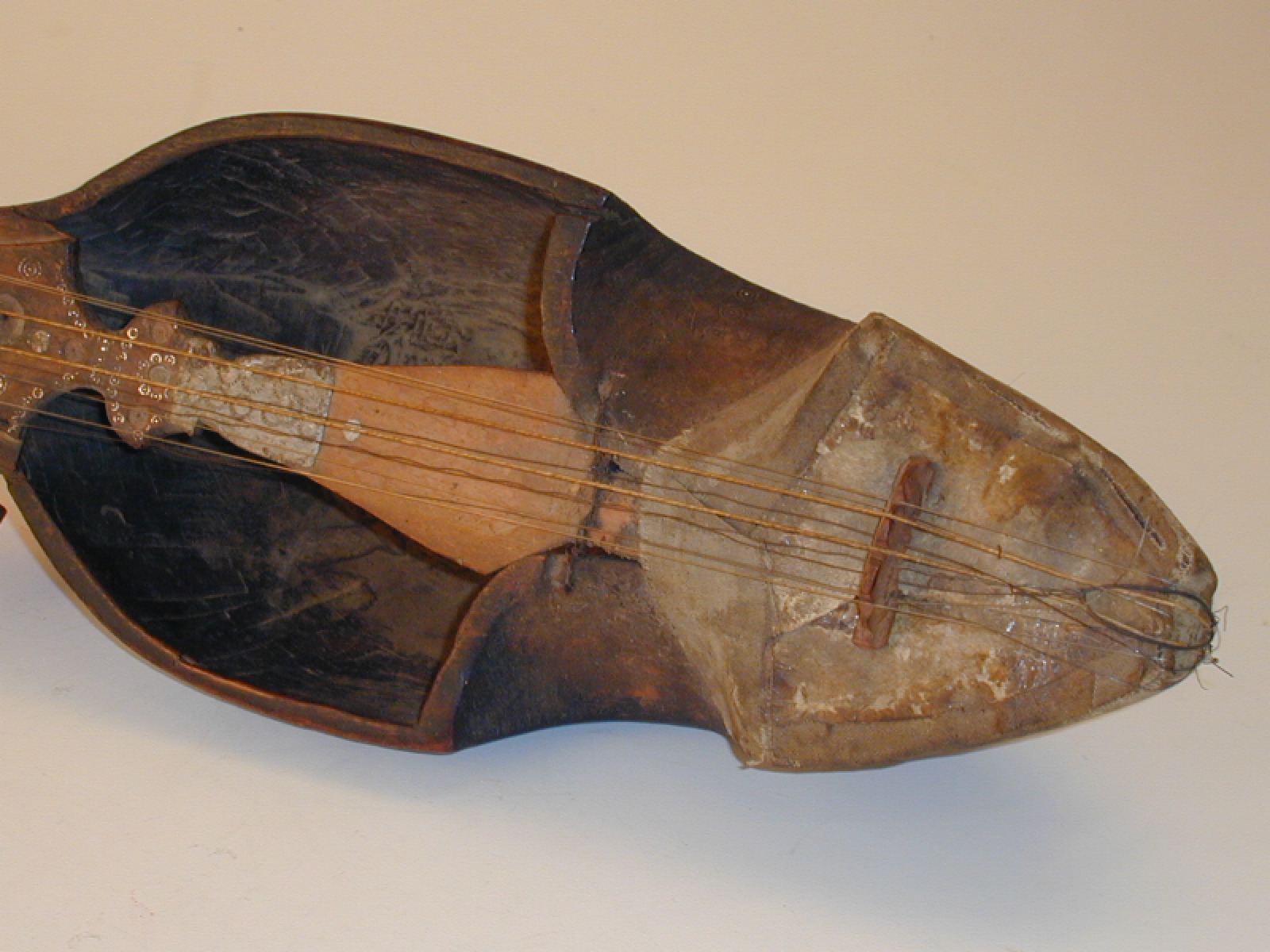
Saringda is a bowed folk fiddle of the sarangi class. It is found in Northern India, Pakistan, and Nepal. There is actually no consensus as to whether this instrument deserves to be considered a separate instrument, or just another variation upon the sarangi. For those who are disposed to consider saringda to be a separate instrument, it is differentiated from the sarangi by its shape. The base of the saringda is rounded or pointed where the base of the sarangi is square. Furthermore, the neck has a different shape.
The size is highly variable. One to two feet in length is normal. One occasionally finds them larger than two feet, but as a matter of classification, such larger versions are generally referred to as “sarang” instead of “saringda” or “sarangi”. There is really no agreement as to exactly what size constitutes a sarang, there is only agreement that the sarang is larger.

The left hand technique for the saringda does not vary appreciably from the sarangi. As with the sarangi, it would not be fingered by pressing the string against a fingerboard, but would instead be fingered by sliding the nail (or at least what used to be a nail) of the index, middle, and sometimes ring fingers of the left hand against the string.
It is bowed with the right hand. The holding of the bow varies slightly from person to person, however in every case, it is an underhanded technique (e.g., German bass) rather than overhand (e.g., French).

The bow (known as “Gaz” or “Kaman”) is highly variable. In its simplest, it is nothing but a piece of wood which is bent into a bow and strung with horsehair. Occasionally, it has a more complicated construction based upon a wooden rod with a wooden frog supporting the horsehair. The frog is then fixed to the body of the by string. Among folk musicians, small bells (ghunghuru) may either be tied to the bow, or worn around the wrist of the right hand.

The number and function of the strings (known as “Tar”) are variable. In its simplest, it has only a single string. However, it usually has three to four strings which may be bowed. Of these, one string is the main string (known as “Baj Tar”, while the others function sometimes as a drone, and at other times to extend the range of the instrument into the lower octave. As with the sarangi, there may be sympathetic strings which vibrate without ever being bowed or struck. Since the saringda is generally a much simpler instrument than the classical sarangi, the number and complexity of these sympathetic stings is considerably less.
The Saringda shares one important component with almost all bowed instruments of India. That is the fact that there is thin skin stretched over an opening in the resonator upon which the bridge is placed. This is shown below:
The tuning of the saringda is comparable to the Sarangi. (Go To Sarangi Tuning)

Photo Gallery
All photos courtesy of Howard Owen






Selected Video
Other Sites of Interest
How Does Music mean? Embodied Memories and the Politics of Affect in the Indian Sarangi
Bowed strings and sympathy, from violins to indian sarangis
Let's Know Music and Musical Instruments of India
Master Musicians of India: Hereditary Sarangi Players Speak
The North Indian Classical Sarangi: Its Technique and Role
Kamanche, the Bowed String Instrument of the Orient
The Acoustic Dynamics of Bridges of Bowed Instruments (An Outline of Comparative Instrument-Making)
The Natural History of the Musical Bow
India : North Indian folk music
Representing Pakistan through folk music and dance /by Shumaila Hemani.
Instrumental music: Studies in the sociological significance of the classical and the folk
A Review of Wood Biomass-Based Fatty Acids and Rosin Acids Use in Polymeric Materials
